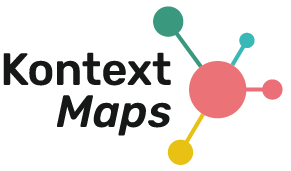5G technology, global foreign policy or climate change are complex topics. Simple terms are supposed to help explain them. Knowledge becomes more accessible to more people. But: anyone who writes about complex things is forced to leave out information. This is bad – because part of the overall picture is always lost as a result.
Of course, not everyone can or must understand the molecular relationships of CO2 in the earth’s atmosphere or master the mathematical formulas of quanta, but there are experts who can. When explaining complex facts, a basic knowledge of the reader must therefore be assumed or, abbreviated by the knowledge of experts, generally accepted as true.
As an author, a few assumptions are therefore crucial for us:
- Find, process and disseminate relevant information.
- Contribute to the formation of opinion by publishing logically correct arguments.
- Criticize and control positions of power so that important decisions are not made on the basis of false or incomplete information.
Given these assumptions, an often complex and difficult topic must be communicated objectively and comprehensibly. Regardless of whether words, data, graphics or photographs are used. The goal is to present them in such a way that (almost) everyone understands them.
The renowned journalist Ernst Elitz said: “Quality is when the reader says after reading: ‘I understand!’”
The reasons behind economic sanctions, the context of digital legislation or the complexity of the transfer market in professional soccer. All such topics must be presented in a way that an audience can quickly understand. They must provide an overview and context at a glance, even in a news feed.
Reducing complexity is therefore one of the main tasks and possibly the biggest challenge that knowledge workers face.
Systems
There is no such thing as the complexity, only the complexity of something, such as our political system (if we think big), our ecosystem (if we think even bigger) or artificial intelligence (if we think big and futuristic) . The sociologist and social critic Niklas Luhmann has studied such systems. When broken down – or reduced in complexity – he found that the complexity of a system arises from the fact that it consists of many elements or components that are interdependent, can be more or less closely interwoven, and can interact. At the same time, however, there are so many elements that they cannot all be connected to each other at all times.
A topic of high complexity can therefore be imagined as my extended family: dozens of people, between one and 95 years old, all know each other and everyone has an opinion. From love, awe, envy to rejection, everything is there. All are loosely connected to each other at times, at other times more closely. The decision of an individual (divorce, moving, a pay-TV subscription) can influence other people. At the same time, not everyone is connected to every family member all the time. Some have not had contact for years and there is hardly any influence.
With topics, the question is similar: Who knows whom? Who likes whom? Who is the cool uncle and who is the annoying little sister who messes everything up? This way, the elements of a system and their relationships to each other become more visible.
For example, one of the topics in Der Kontext deals with digitalization in Africa. Africa! That’s 55 states (if you recognize Western Sahara, which is a political minefield, among other things). Fifty-five! Digitalization involves questions of economics, science, infrastructure, culture(s), history, philosophy. And then there are also global influences. A supercomplex that felt like a patchwork family, making “Modern Family” seem straightforward.
Leave out
By following Einstein’s quote, “Make things as simple as possible, but not simpler,” you can reduce complexity to a certain degree. An important step that people want to take to convey content is message selection.
Information that is not important in the context of the main topic is omitted. Information that is important but less important or surprising than other information is sorted out. It is decided what you, the readers, are shown. Only the nuggets should remain – the interesting facts and stories that explain the overall complex. In the case of Africa, for example, it was decided not to write about the role of the internet in Egyptian politics over the last ten years, but to explain that in some countries, such as Ethiopia, Egypt and Gabon, the internet has been periodically shut down by governments.
Choice of words and expression are another way of reducing complexity, at least on the linguistic level. Therefore, only short texts are used at Der Kontext. At the same time, difficult sentence constructions are avoided, as are foreign words. Sometimes this can be a conflict, especially when experts have explained what it is about. They often have a very precise technical vocabulary, but it is often not generally understood.
This involves risks. Terms such as “diesel scandal” but also “fake news” are elastic and give room for one’s own ideas and perceptions. What Donald Trump and “Breitbart” call fake news is the absolute opposite of the reputable media’s fake news. Both terms rob what they actually want to describe of its complexity, but give the reader a whole range of emotions, which neither facilitate understanding of the complex issue nor communication with each other.
Embrace complexity
So everyone has to face what Luhmann already stated in 1984: “Only complexity can reduce complexity.” Sounds strange? But it is not. “Complexity” comes from the Latin “complexus” and means something like “embrace”. This is also the solution for dealing with complexity. Media must try to motivate readers to embrace the complexity of a topic and to embrace each other in a big, heartfelt group hug.
This requires two things: The topic must be interesting enough to engage with. And the topic needs enough space to develop.
Communication scientists Armin Scholl and Wiebke Loosen believe that complex systems cannot be represented in a linear fashion. It is the non-linear, the connections between the individual elements, that represents the order of a system. Yet print products such as books and newspapers function in a linear fashion.
Although there is a table of contents and comments often refer to a news item on another page in the newspaper, the content was not directly linked until a few decades ago. If you wanted to see what the regional newspaper had written on the same topic a year ago, you had to go to the archives. The internet has changed all that.
The internet loves complexity. For years, we have been finding underlined words in online articles that we click on and that redirect us to other posts and websites, to videos and examples. Links enrich us as readers. This is because they increase the credibility of posts, make it easier to provide evidence by leading to sources. And they enable the audience to be pointed to what goes beyond the scope of an article: the other elements from a complex subject area.
With the KontextMaps platform and with it with Der Kontext, these other contributions are not (only) linked within the text. Instead, the map itself shows the overview, the connections and further thematic aspects. And at the bottom of the short articles, all linked connections are clickable. In addition, readers’ tips can be linked to other areas of the map. This way, the overall context is already visually accessible to the reader – and then on even further levels as you read.
This gives topics space and freedom to unfold. This makes it possible to see how the individual elements are connected, i.e. the order behind the topic system. Using the knowledge map, for example, the complexity of digitization in Africa is drawn. All aspects are logically and visually connected. The deeper readers click through the layers in the network of connections, the clearer the topic structure becomes. At the same time, they can always decide against diving even deeper – to the bottom of the topic.
Graphics are a great way to present complex information in an attractive way. Does it make sense to show readers a table of numbers and leave it at that? Often not. Graphics help, and as the example of digitalization in Africa shows, it immediately becomes clear how many people in Zambia, for example, can use free, semi-free or unfree internet – also in comparison to other countries. The complexity of the data is thus made readable by an editorial and graphics department. Color codes are used to show which countries are subject to particularly heavy censorship of internet content.
Besides all this, there are many other ways of dealing with complexity. Podcasts, short audio or video clips in which experts have their say, interactive timelines. Cross-media and trans-media offer enormous possibilities, as do digital storytelling.
Conclusion:
With linear formats, such as printed media but also classic websites, it is possible to grasp and communicate complexity. To do this, the many aspects of a topic have to be simplified, the language has to be easy and then a lot has to be left out! On the one hand, a topic is thus sharpened. On the other hand, a lot of important information is left out. An article about a lunar eclipse in a tabloid newspaper is radically shorter than in a scientific magazine. Real understanding cannot arise from texts the length of a tabloid article, of course… but long texts are often not particularly entertaining.
This balancing act is cruel for everyone involved. For the authors, because they have to choose and decide on a level of detail. For readers, because they can only appropriate a topic to the extent that it is offered by the authors.
KontextMaps are one possible solution. They are particularly suitable for topics with numerous facets and details that are necessary for overall understanding. Authors can include as much content as is really necessary for comprehension. Readers get an overview AND the necessary depth of detail. To dive in, discover, understand.

